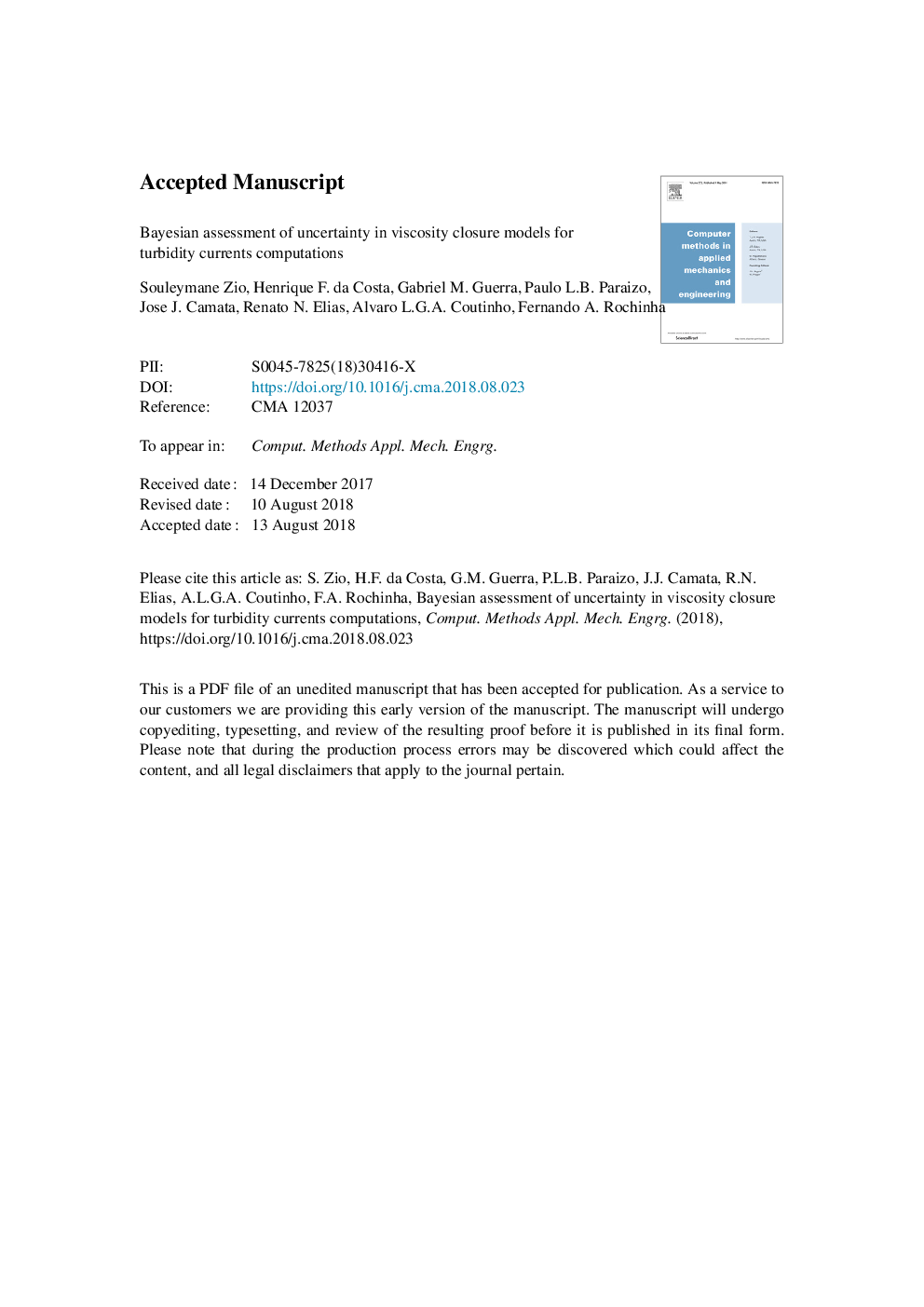| کد مقاله | کد نشریه | سال انتشار | مقاله انگلیسی | نسخه تمام متن |
|---|---|---|---|---|
| 9952346 | 1447393 | 2018 | 39 صفحه PDF | دانلود رایگان |
عنوان انگلیسی مقاله ISI
Bayesian assessment of uncertainty in viscosity closure models for turbidity currents computations
ترجمه فارسی عنوان
ارزیابی بیزی برای عدم اطمینان در مدل های بسته شدن ویسکوزیته برای محاسبات جریان های مختلط
دانلود مقاله + سفارش ترجمه
دانلود مقاله ISI انگلیسی
رایگان برای ایرانیان
کلمات کلیدی
جریانهای ذرات ریز، اختلاف مدل، عدم اطمینان،
موضوعات مرتبط
مهندسی و علوم پایه
مهندسی کامپیوتر
نرم افزارهای علوم کامپیوتر
چکیده انگلیسی
Particle-laden flows are complex natural phenomena promoted by the interaction of fluids and solids. A particular class of interest here are turbidity currents. They are one of the mechanisms responsible for sediment transport and deposition that leads to the formation of basins hosting oil reservoirs. Even slight differences in the mixture density induced by the spatial sediment distribution may trigger the turbulent flows capable of carrying heavy loads for long distances. Detailed modeling of turbidity currents may offer new insights to help geologists to understand the deposition mechanisms and the final stratigraphic form of the reservoir. Modeling this complex system is challenging due to the scarcity of observed and measured data, and, also due to the need of employing uncertain and approximate physical hypothesis. One critical source of uncertainty, which is the focus here, is associated with the choice of appropriate phenomenological models for the effective viscosity of the mixture of fluid and sediments. In this context, we employ a Bayesian framework to enable the design of robust computer simulators that take into account parameter uncertainty and model discrepancies. In the present work, we consider a discrepancy model embedded in the viscosity closure model characterized as a random parameter. A hierarchical Bayesian calibration approach is then used to estimate the hyperparameters of the corresponding probability distribution function. We use synthetic data and examine two scenarios, both involving sustained currents inside a channel that mimics laboratory flow conditions. In the first, we use part of the data for calibration and the rest for validating the resulting model. In the second and more challenging one, we change some flow conditions to evaluate the predictive ability of the calibrated computer model.
ناشر
Database: Elsevier - ScienceDirect (ساینس دایرکت)
Journal: Computer Methods in Applied Mechanics and Engineering - Volume 342, 1 December 2018, Pages 653-673
Journal: Computer Methods in Applied Mechanics and Engineering - Volume 342, 1 December 2018, Pages 653-673
نویسندگان
Souleymane Zio, Henrique F. da Costa, Gabriel M. Guerra, Paulo L.B. Paraizo, Jose J. Camata, Renato N. Elias, Alvaro L.G.A. Coutinho, Fernando A. Rochinha,
